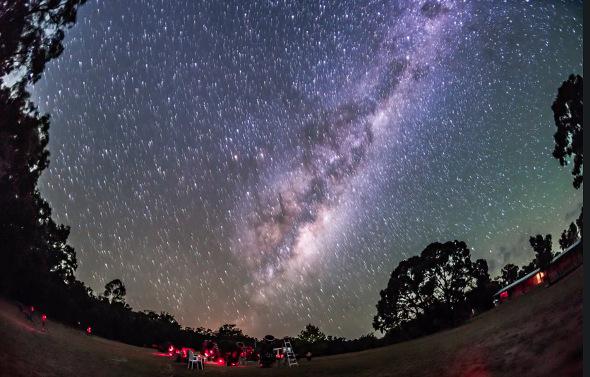We live on a giant spinning ball of rock and metal.
That is such a counterintuitive statement! Standing on its surface, the Earth looks flat, but that’s an illusion borne of the Earth’s huge size compared with us. The spheroidal nature of our planet becomes apparent when you travel around it; the clues are everywhere.
One of the best, and most disconcerting for me personally, is viewing the skies from the Southern Hemisphere. Stars not visible from the Northern Hemisphere, hidden from us boreal observers by the bulk of our planet, become visible.
But it’s more than that. I’ve been to Australia twice, and one of the most unsettling aspects of watching the stars from Down Under is that they move in the wrong direction.
That video, taken by Alan Dyer, shows four views, one in each of the cardinal directions, as seen at the OzSky Star Safari near Coonabarabran, in New South Wales, Australia, in April. If you’re even passingly familiar with the northern sky this video will be decidedly unfamiliar; seeing the Milky Way’s satellite galaxies (the Large and Small Magellanic Clouds) at all is impossible from (for example) the United States. The same is true for the inky Coal Sack, a dark dust cloud in the plane of the Milky Way that hides the stars behind it, and for the austral constellations and stars.
But for all that, it’s seeing stars rise and set backward that really throws me off.
The Earth spins west to east, so the stars rise in the east and set in the west. In the Northern Hemisphere, facing south, the Earth’s spin means the stars move left to right. But if you travel south of the Equator your orientation is upside-down relative to what you’re used to, flipping right and left. From Australia (and facing, say, east) the stars rise and move to the left. The setting stars move to the right.
This gave me no end of trouble in Australia. I orient myself during the day using the Sun, and my intuition kept throwing me off. I had to stop and think about directions whenever I walked around. It was odd, but it also had the advantage of making me more aware of where I was and how wonderful it is to live on the surface of a mildly lumpy sphere.
I also want to point out a couple of things in the video. You can sometimes see a faint reddish and greenish glow near the horizon; that’s likely airglow, a dim luminescence caused by atoms and molecules in the upper atmosphere emitting light as they lose energy absorbed during the day from the Sun. Also, if you keep your eyes fixed on one spot in the sky in the view to the north, you’ll see some “stars” that don’t move; those are geosynchronous satellites, taking 24 hours to orbit the Earth once. That makes them appear to be fixed on the sky as the stars move past.
The OzSky Star Safari looks like a lot of fun; the dark sky and magnificent sprawl of stars must be something to behold. And if you look at the astronomers scurrying around in the time-lapse, you’ll see a couple of very large Dobsonian telescopes (the ones that look like laser cannons pointing upward). I can only imagine what the view through those eyepieces must be like!
Someday I hope to find out. It’s good to sometimes shake up your world view, to get some perspective, and see things literally moving the wrong way. It forces you to reconsider just how amazing our Universe can be … even if it’s just our little piece of it.
